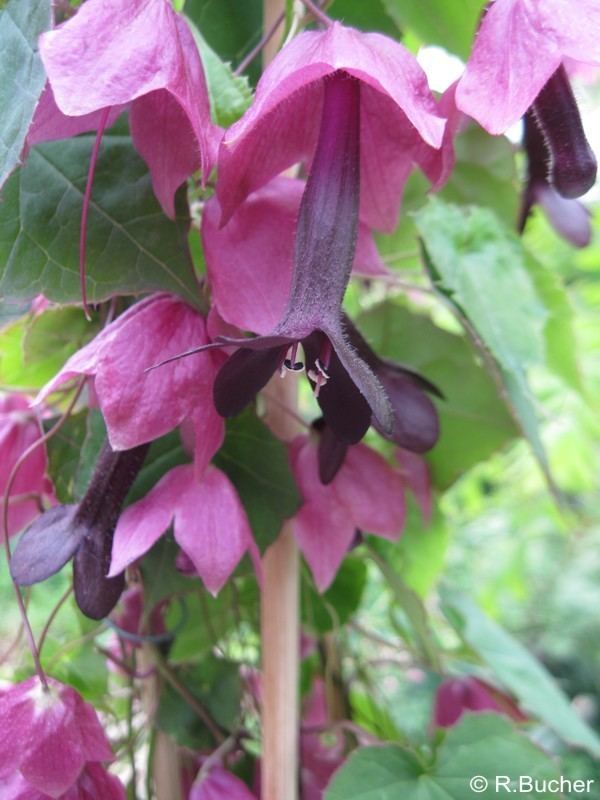Clade Angiosperms Rank Species | ||
 | ||
Scientific name Rhodochiton atrosanguineus Similar Rhodochiton, Cobaea scandens, Thunbergia alata, Lophospermum, Asarina | ||
Rhodochiton atrosanguineus is a herbaceous perennial vine native to Mexico. Its dangling flowers have a pink, bell-shaped calyx of sepals surrounding a protruding, tubular corolla of purple-black petals. It has been cultivated as an ornamental plant since at least 1836. It has somewhat hairy, heart-shaped leaves, often with purple venation. The vine can reach three metres in length in perfect conditions, but more-likely 1.5-2.5 metres. The seeds are 3mm across.
Contents
Although the specific epithet is sometimes spelt atrosanguineum, chiton in Greek is masculine, so the ending is correctly -us.
R. atrosanguineus has been known colloquially in the UK as the "black man's willy". Another common name is purple bell vine or simply purple bell.
All Rhodochiton species are sometimes placed in the genus Lophospermum.
Taxonomic history
Wayne J. Elisens has outlined the somewhat confused taxonomic history of the name of this species. In 1829, Joseph Gerhard Zuccarini sent seeds and a description to individuals and botanical gardens under the name "Rhodochiton volubile", considering it to be a new genus; however the name was not formally published. In 1832, Zuccarini decided that it was actually a Lophospermum, and published the name Lophospermum atrosanguineum, writing that "I held it at first to be new genus and sent the seeds obtained in the summer of 1829 to several gardens under the name Rhodochiton volubile. The figure in the Botanical Register has convinced me of the identity of the genus." Not knowing of Zuccharini's change of name, in particular his publication of the epithet atrosanguineum, in 1834 Christoph Friedrich Otto and Albert Gottfried Dietrich published and illustrated Rhodochiton volubilis, an illegitimate name since a prior epithet existed. In 1943, Rothmaler provided a legitimate combination in the genus Rhodochiton, namely Rhodochiton atrosanguineus.
Cultivation
R. atrosanguineus is undemanding if given full sun or near-full sun, well-drained soil, and general care. It will tolerate cold temperatures, but not freezing. It might or might not become deciduous, depending on winter temperatures.
Propagation is by seed sown in spring, or at 15-18°C.
Plants can be pruned in late winter to manage size and shape.
